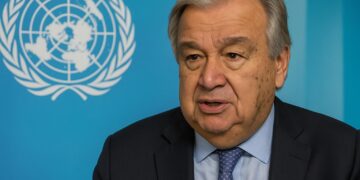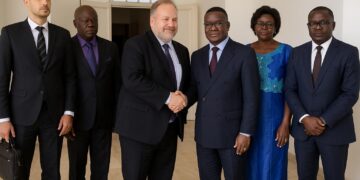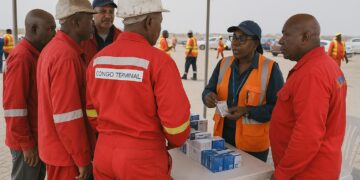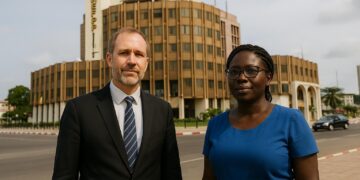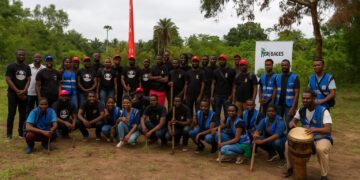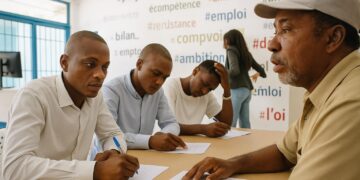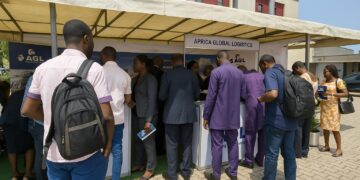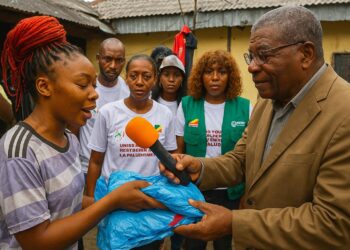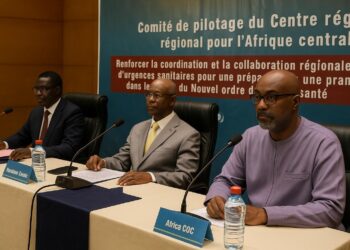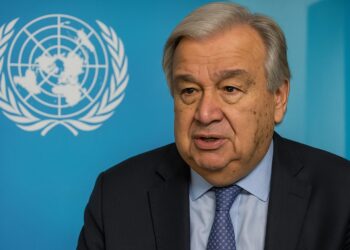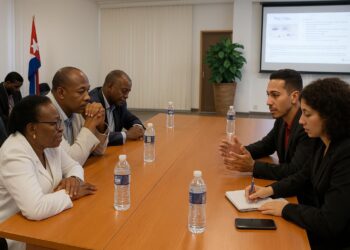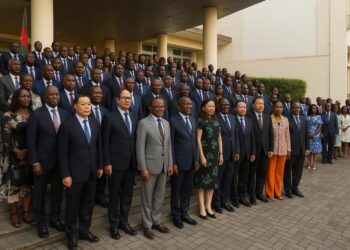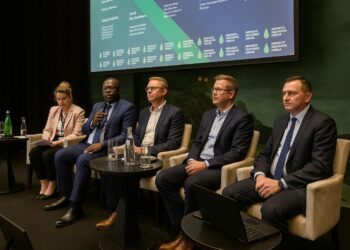Peri-Urban Farming Strengthens Brazzaville Supply
The peri-urban landscape south of Brazzaville gained a strategic asset on 21 October as Agriculture Minister Paul Valentin Ngobo inaugurated the Kélé Kélé market-garden, a seven-hectare site 20 kilometres from the capital in Nganga Lingolo, district of Goma Tsé-Tsé.
Officials described the launch as a decisive step toward securing a steady flow of tomatoes, leafy vegetables and other staples to the city’s two million consumers, mitigating volatile supply chains that historically depend on distant rural zones or imported produce sensitive to regional logistics shocks.
Debt Conversion Funds Productive Assets
The project emerges from the Debt Reduction and Development Contract, a bilateral mechanism that converts part of France’s public claims on Congo into sustainable capital investments in priority sectors, thereby aligning macro-fiscal relief with tangible production capacity at community level.
According to Minister Ngobo, the arrangement underscores a shared commitment to food security, employment and diversification away from oil dependence, while the French Development Agency, AFD, sees the field as a demonstration lab for agro-ecological protocols adapted to Central African soils and rainfall patterns.
Plot Organisation Maximises Space
Land has been divided into four compact blocks, each equipped with irrigation laterals and protected beds; within those blocks, 126 growers—81 women and 45 men—operate individual plots of 340 square metres, an arrangement designed to balance economies of scale with household autonomy.
Current crop lists range from tomatoes and courgettes to spinach, onions and gombo, reflecting both Congolese dietary preferences and market analytics conducted under the Parsa programme, which guided seed choice, calendar planning and post-harvest handling to minimise waste during the short journey to Brazzaville.
Women Drive Inclusive Growth
The high proportion of female producers has been hailed by local administrators as evidence that peri-urban agriculture can simultaneously address gender equity and livelihood objectives, especially for households displaced by earlier urban road works along the Corniche and other sites now earmarked for real-estate projects.
Group leader Saturnin Samba stresses that a revolving fund seeded by AFD enabled the cohort to procure tools and bio-inputs without resorting to high-interest micro-credit, adding that technical coaching on composting and natural pest management has already lowered expenses relative to synthetic fertiliser regimes previously used.
Agro-Ecology Spurs Climate Resilience
The site’s strict agro-ecological charter bans residual pesticides and prioritises intercropping for soil health, positioning Kélé Kélé to tap into niche demand for organic produce among hotels, embassies and supermarkets that have begun to pay premiums for traceable low-carbon vegetables.
Researchers from Cirad, cited by French Ambassador Claire Bodonyi during the ceremony, consider the plot a living laboratory for measuring how small-scale drip systems reduce water consumption by up to half compared with conventional flooding methods widely observed along the Congo River floodplain.
Infrastructure Enhances Year-Round Output
Infrastructure delivered under the first construction phase includes a laterite access road linking National Route 1, a capture well, two elevated water towers and motor pumps powered by diesel, all dimensioned to guarantee year-round irrigation even during the region’s August–September dry spell.
Concrete retaining walls already stabilise the most exposed slopes, and horticultural beds are terraced to slow runoff, a design that also ensures compliance with Congo’s 2021 national soil conservation guidelines aimed at curbing the annual loss of fertile topsoil around Brazzaville’s fast-growing outskirts.
Engineering Challenges and Market Links
Yet engineers acknowledge that the hilly terrain still exposes lateral embankments to gullying; additional stone pitching and drainage culverts are now being costed in a second-phase budget that local authorities hope to mobilise through the same CDD envelope without straining recurrent expenditure ceilings.
Market operators interviewed at Brazzaville’s Total and Moungali markets caution that transport bottlenecks could offset field gains if the municipal cold-chain project, under discussion since 2022, does not proceed, but they nevertheless welcome the prospect of shorter purchase circuits and fresher merchandise.
Strategic Role in National Diversification
Congo’s agricultural contribution to GDP remains under 10 percent, yet the government’s National Development Plan sets a 20-percent target by 2030; in that context, peri-urban clusters like Kélé Kélé are portrayed as quick-maturing assets that can leverage existing urban demand and logistics synergies.
As donors and policy-makers scrutinise replicability, the Kélé Kélé site offers a template that blends debt conversion, gender inclusion and environmental stewardship, potentially signalling how Congo-Brazzaville can transform its comparative ecological advantages into diversified revenue streams while strengthening food resilience for its rapidly urbanising population.
Investor Outlook and Risk Mitigation
Private equity managers monitoring Central African agrifood have indicated, in separate briefings, that contiguous sites of at least fifteen hectares would meet the minimum scale for mezzanine financing; authorities therefore view Kélé Kélé as a pilot that can aggregate parcels into bankable clusters over time.
Risk-sharing instruments under discussion include weather index insurance and longer-tenure leasing contracts, both intended to reassure institutional investors such as pension funds that crop cycles can absorb climate variability while generating predictable cash flows benchmarked against Brazzaville’s wholesale price index for fresh produce.




